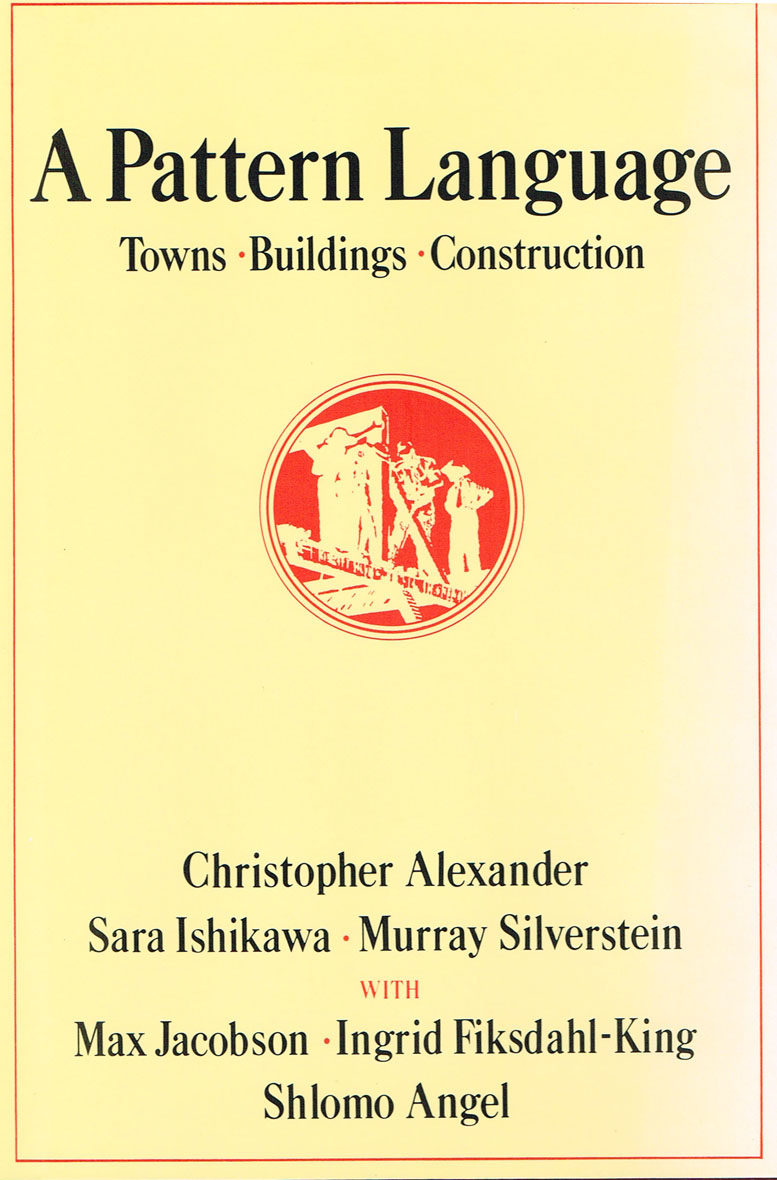
“A Pattern Language” Rediscovered
In a blog post a while back, I mentioned several design and architecture books I lean on in my practice and that I thought might interest those of you who enjoy reading about good design.
One of my blog readers commented on that post and mentioned a book I’d left off the list – a book I’d first studied in college and still have on my bookshelf today (it’s not my original college copy, I wore that out a long time ago).
The book is “A Pattern Language” by Christopher Alexander, and my blog reader wanted to know if I had it in my collection.
Honestly, I had to check my bookshelf. I knew I had purchased a second copy, but I hadn’t dug it out in quite a while. But it was there all right, and I soon found myself lost in leafing through its’ nearly 1,200 pages once more, remembering a lot of things about good home design that I’d first learned decades ago.
Things I’ve included in my designs, and have tried to master over the years, but that I’d forgotten the roots of.
I’m very impressed that my non-Architect blog reader had found and embraced the book – it’s not heavy reading, but you have to really love design to take it on.
Whether you read it cover to cover, or just leaf through to the pages that apply to what you’re working on, “A Pattern Language” is a foundational text that has helped generations of Architects, designers, and homeowners to – in my reader’s words – “…understand what makes a house “feel” right and why.”
So what’s “A Pattern Language” all about?
Christopher Alexander, the main author of the book, is a Professor of Architecture at UC Berkeley. In the 1960s and 1970s, Professor Alexander and his colleagues began forming “…an entirely new approach to architecture, building, and planning…” recognizing that certain design patterns are common to good places. Patterns that aren’t complicated, and that can be used by architects and non-architects to help create towns, streets, homes, and rooms.
Architects like me have always worked with the “language” of our profession – the parts and pieces of buildings and their scale, proportion, and massing.
But when it comes to home design, the language of design sometimes seems a little arcane and can be an obstacle that keeps our clients from fully understanding what we’re proposing to do, and can keep them from fully participating in the design process.
A Pattern Language recasts that esoteric prose into something much more practical, comprehensible, and useful for homeowners.
The book’s “patterns” are individual bits of that language that answer simple questions like, “where should I place the closet?” and “how many windows should a bedroom have?”.
And each pattern is tied to others, to help you understand which ones work together and which ones don’t.
For example, pattern #128 “Indoor Sunlight” says “If the right rooms are facing south, a home is bright and sunny and cheerful; if the wrong rooms are facing south, the house is dark and gloomy”.
That’s something we’ve all experienced, isn’t it? Homes that feel welcoming and bright, and homes are dark and depressing.
But how do you know which rooms to face south? That’s the real genius of A Pattern Language – Alexander connects pattern #128 to both larger and smaller-scale patterns in the book that answers those questions and fills out the details.
At the larger scale, pattern #128 Indoor Sunlight is connected to #105 South Facing Outdoors and #127 Intimacy Gradient. At the smaller scale, it’s connected to #161 Sunny Place; #163 Outdoor Room; #236 Windows Which Open Wide, and a few others.

Over several pages, Alexander explains exactly how to use the patterns to arrange your homes’ rooms to capture the most sun, ending with this:
“Therefore: Place the most important rooms along the south edge of the building, and spread the building out along the east-west axis. Fine-tune the arrangement so that the proper rooms are exposed to the south-east and the south-west sun. For example: give the common area a full southern exposure, bedrooms south-east, porch south-west. For most climates, this means the shape of the building is elongated east-west.”
He follows that with a sketch showing an example arrangement.
A Pattern Language helped me understand why I’ve always been uncomfortable with “picture windows” in my personal homes and in the homes I design. From pattern 239 “Small Panes”:
“When plate glass windows became possible, people thought that they would put us more directly in touch with nature. In fact, they do the opposite.”
“They alienate us from the view. The small the windows are, and the smaller the panes are, the more intensely the windows help connect us with what it on the other side.”
“It is the function of windows to offer a view and provide a relationship to the outside, true. But this does not mean that they should not at the same time, like the walls and roof, give you a sense of shelter and protection from the outside. It is uncomfortable to feel that there is nothing between you and the outside, when in fact you are inside a building.”
That’s the kind of insight I find appealing, rewarding, and highly useful in my practice.
If you’re thinking about designing a home or remodeling the one you’re already in, and want help understanding the “patterns” that make up good design, you’ll find a lifetime of wisdom and practical advice throughout the 1,200 pages of A Pattern Language.



A Pattern Language! What a great book, I bought it 40 years ago when I was starting in the construction business. #159 “ light on two sides of every room “ This one was mind blowing. I never realized how important correct architecture is to the feeling of a building.
A simple idea that makes a big difference!